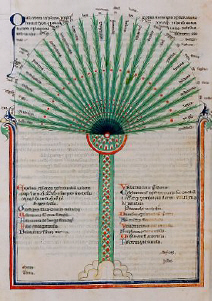21. The claim of Motion to be established as a genus will depend upon three conditions: first, that it cannot rightly be referred to any other genus; second, that nothing higher than itself can be predicated of it in respect of its essence; third, that by assuming differences it will produce species. These conditions satisfied, we may consider the nature of the genus to which we shall refer it.
Clearly it cannot be identified with either the Substance or the Quality of the things which possess it. It cannot, further, be consigned to Action, for Passivity also comprises a variety of motions; nor again to Passivity itself, because many motions are actions: on the contrary, actions and passions are to be referred to Motion.
Furthermore, it cannot lay claim to the category of Relation on the mere ground that it has an attributive and not a self-centred existence: on this ground, Quality too would find itself in that same category; for Quality is an attribute and contained in an external: and the same is true of Quantity.
If we are agreed that Quality and Quantity, though attributive, are real entities, and on the basis of this reality distinguishable as Quality and Quantity respectively: then, on the same principle, since Motion, though an attribute has a reality prior to its attribution, it is incumbent upon us to discover the intrinsic nature of this reality. We must never be content to regard as a relative something which exists prior to its attribution, but only that which is engendered by Relation and has no existence apart from the relation to which it owes its name: the double, strictly so called, takes birth and actuality in juxtaposition with a yard’s length, and by this very process of being juxtaposed with a correlative acquires the name and exhibits the fact of being double.
What, then, is that entity, called Motion, which, though attributive, has an independent reality, which makes its attribution possible – the entity corresponding to Quality, Quantity and Substance?
But first, perhaps, we should make sure that there is nothing prior to Motion and predicated of it as its genus.
Change may be suggested as a prior. But, in the first place, either it is identical with Motion, or else, if change be claimed as a genus, it will stand distinct from the genera so far considered: secondly, Motion will evidently take rank as a species and have some other species opposed to it – becoming, say – which will be regarded as a change but not as a motion.
What, then, is the ground for denying that becoming is a motion? The fact, perhaps, that what comes to be does not yet exist, whereas Motion has no dealings with the non-existent. But, on that ground, becoming will not be a change either. If however it be alleged that becoming is merely a type of alteration or growth since it takes place when things alter and grow, the antecedents of becoming are being confused with becoming itself. Yet becoming, entailing as it does these antecedents, must necessarily be a distinct species; for the event and process of becoming cannot be identified with merely passive alteration, like turning hot or white: it is possible for the antecedents to take place without becoming as such being accomplished, except in so far as the actual alteration (implied in the antecedents) has “come to be”; where, however, an animal or a vegetal life is concerned, becoming (or birth) takes place only upon its acquisition of a Form.
The contrary might be maintained: that change is more plausibly ranked as a species than is Motion, because change signifies merely the substitution of one thing for another, whereas Motion involves also the removal of a thing from the place to which it belongs, as is shown by locomotion. Even rejecting this distinction, we must accept as types of Motion knowledge and musical performance – in short, changes of condition: thus, alteration will come to be regarded as a species of Motion – namely, motion displacing.
